In this third and final, for now, article on Royal Netherlands Marine Corps Land Rovers I am focussing on the Dutch Marines WMIK variants, writes Bob Morrison.
~
The initial small fleet of specialist machine gun-armed WMIK (Weapons Mount Installation Kit) variant Land Rovers used by the Korps Mariniers or Royal Netherlands Marine Corps were basically specialist conversions of some of their Wolf 110 batch. The images on this page were mostly taken by myself in Scotland in April 2014, during the amphibious landings phase of the multinational Exercise JOINT WARRIOR 14-1, but I am fortunate in also having a couple of relevant images taken for me in Chad back in 2009 by our sadly missed photojournalist friend and colleague Yves Debay.
Often when writing about in-service military Land Rovers it is near impossible to glean information from the manufacturer, as the company is usually restricted in what they can say by commercial confidentiality clauses. As for questioning the troops driving, or in charge of the vehicle, they usually just see it as just another ‘company car’ and have little interest in it other than possibly whether or not it can reliably do what they require it to do; though just occasionally I run into a soldier in the field who likes Land Rovers as much as I do.
In the case of the Korps Mariniers’ fleet of WMIK Wolf 110 Defenders, back at the end of the last millennium I was able to glean a little non-restricted information from Land Rover’s old Government & Military Operations team before the standard batch rolled down the production line. Then when eventually some of these were converted to WMIK variants in 2001 by sub-contractor Ricardo Special Vehicles, around the same time as the Italian Carabinieri WMIK fleet which I was allowed to photograph at their Shoreham site, I was able to pick up a little more info; though 18 years down the line some questions still remain unanswered so I am having to rely on observation to some extent.
It is obvious to my eyes that there were two distinct Dutch WMIK batches, which carried either KM21## or KM25## registration plates; as mentioned in Pt.24, the KM standing for Korps Mariniers. The 21-series had their raised air intakes running from the top of the front left (driver’s side) wing, making them in effect a mirror image of the Royal Marines’ WW or Winterised Waterproof batch of Wolves which Land Rover signed over to the end user in Devonport in August 1999. The 25-series batch, in contrast, had their raised air intake exiting from the side of the front right wing just ahead of the door pillar and on the opposite wing they had the standard Wolf model ‘Princess Leia’ cowl.
From this similarity to RM ‘Winter Water’ Wolves I surmised that the former were 110 XD WW variants, which the Dutch MvD confirmed the RNLMC uses, and the latter were standard Dutch Marines Wolves without the wading conversion which had subsequently been adapted with high level air filters for use in arid and dusty environments. The three Dutch Marines WMIKs Yves photographed in Africa while deployed on the EUFOR-Chad/CAR mission, which was operational for twelve months from March 2008 until the UN took over under the MINURCAT mandate, were from the 25-series. Incidentally, note that three different styles of top cowl were used and none were the same as the ones used on Royal Marines Wolves, though the more conical design is similar to the one found on the latest UK Forces R-WMIK+ fleet.
Converted by Ricardo, with additional design and conversion input from RDS Automotive of Leamington Spa, who were subsequently to fall victim to the 2005 MG Rover débâcle, the Dutch WMIK design did not have the same rear compartment roll-cage design as its British cousin, had a scissors mount for the primary armament rather than a low profile ring mount with pintle, and did not sport a secondary commander’s machine gun. Unlike the various WMIKs used by the British Army, Royal Marines and RAF Regiment, which were intended primarily as open-topped recce and fire support vehicles with only a seldom-used extreme inclement weather canopy kit issued, the Dutch WMIKs had permanent and near conventional rear canopies and vehicles were effectively standard height too, whereas the British equivalents were reduced height to allow them to be transported inside CH-47 Chinook helicopters.
Other notable differences between Dutch and British WMIK Wolf variants were essentially limited to: rear lighting arrangement; aluminium chequered plate strengthening to bonnet, wing tops and under-door sills; and spare wheel mounted on the bonnet rather than the roll cage. Wheels fitted, as per the early British WMIKs, were of the pierced steel heavy duty Wolf type rather than the spoked frangible wheels fitted to the later British E-WMIK and R-WMIK batches. Radio enthusiasts will spot that a version of the BOWMAN communications system compatible with the British equivalent was fitted.
The vehicles I photographed up in Scotland in 2014 were being used by the Anti-Armour Troop of 14th Close Support Squadron of the 1st Marine Combat Group and, along with the Armoured All Terrain Vehicle Troop from the same Squadron, their initial primary task was to secure the beachhead perimeter during the amphibious landing phase of the multinational JOINT WARRIOR 14-1 and provide security while a NEO (Non-combatant Evacuation Operation) was conducted by the Royal Navy the next day. Both 21- and 25-series WMIKs operated side by side in the same groups and undertook the same taskings.
For this feature I have deliberately selected images showing the two batches working together and illustrating all four sides of each of the two types in just two shots apiece to ensure interested readers, and scale modellers in particular, have as much visual information as possible. In addition to British and Dutch forces, both Italian and Lithuanian militaries have fielded Ricardo conversion WMIK Land Rovers based on the Core Defender chassis, and other nations, such as Czechia (the Czech Republic) and Poland have commissioned local conversions in the same vein.
[images © Bob Morrison and the late Yves Debay]


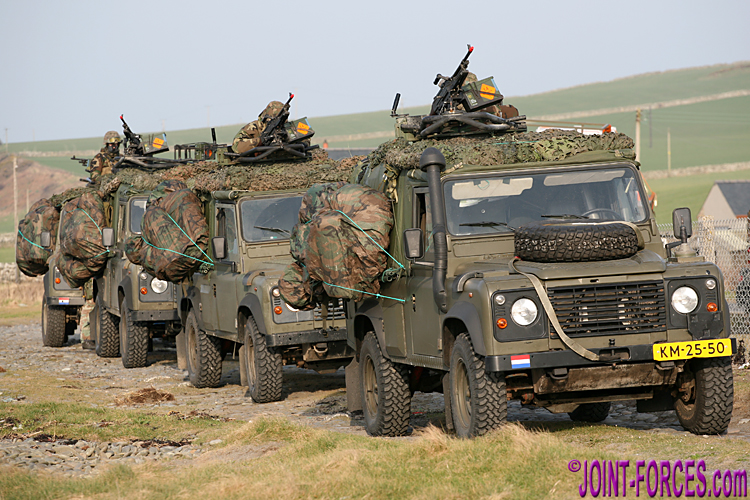
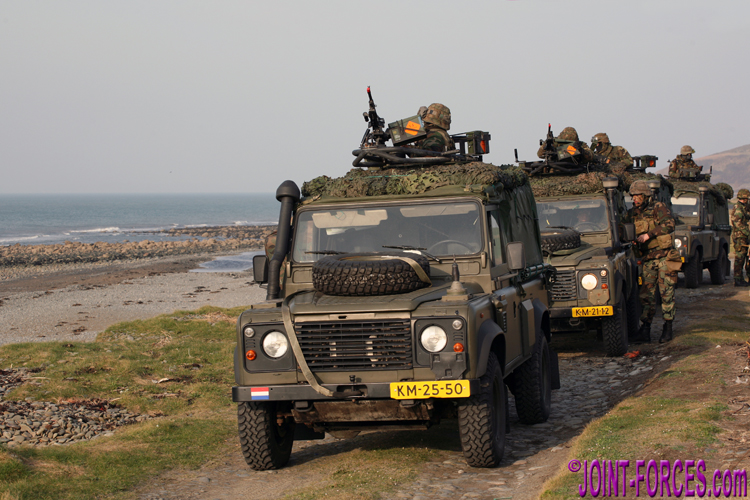
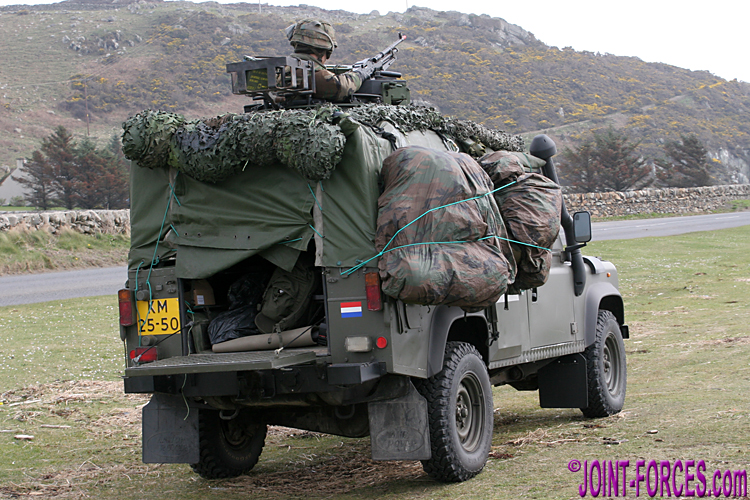
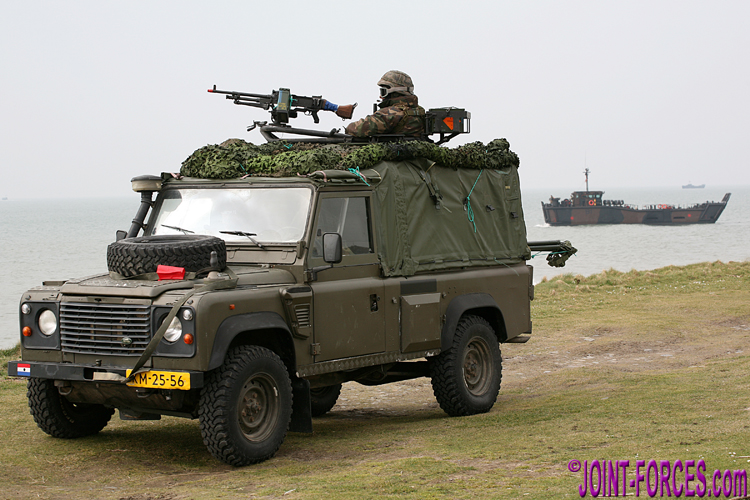
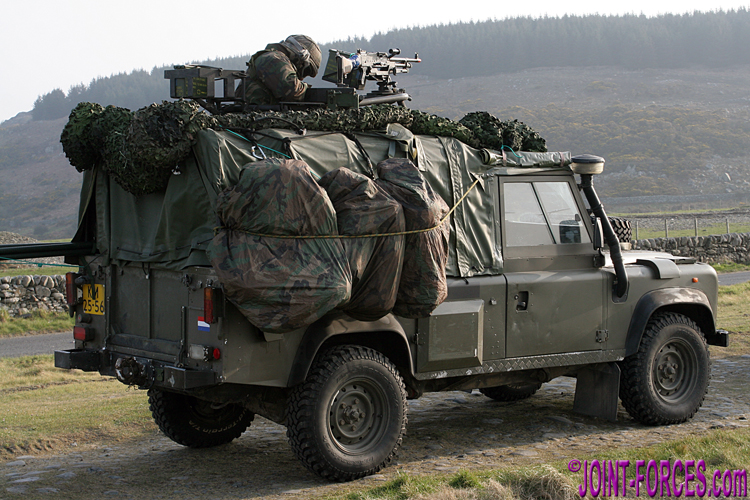


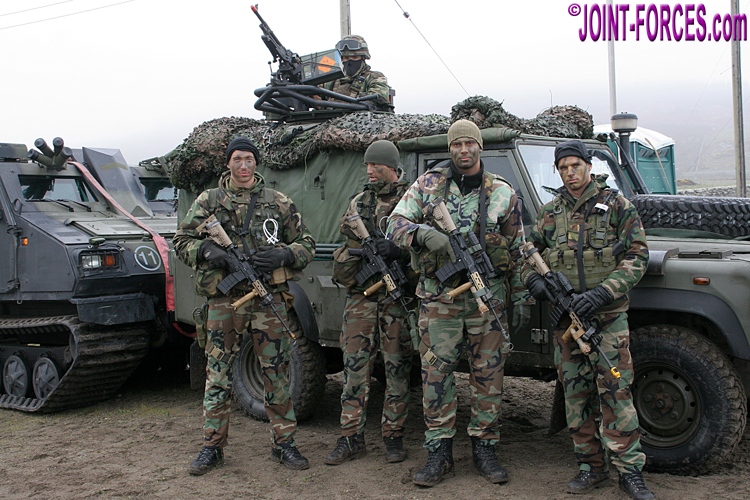
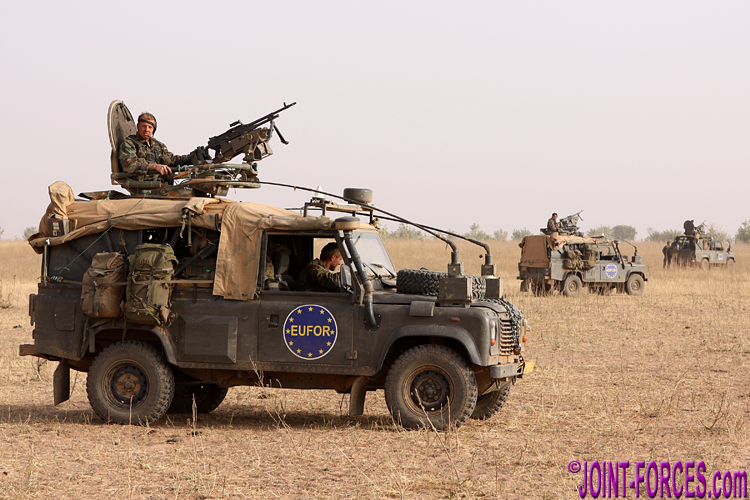



















Pingback : MLR31 ~ LITHSOF WMIK Defenders - Joint Forces News